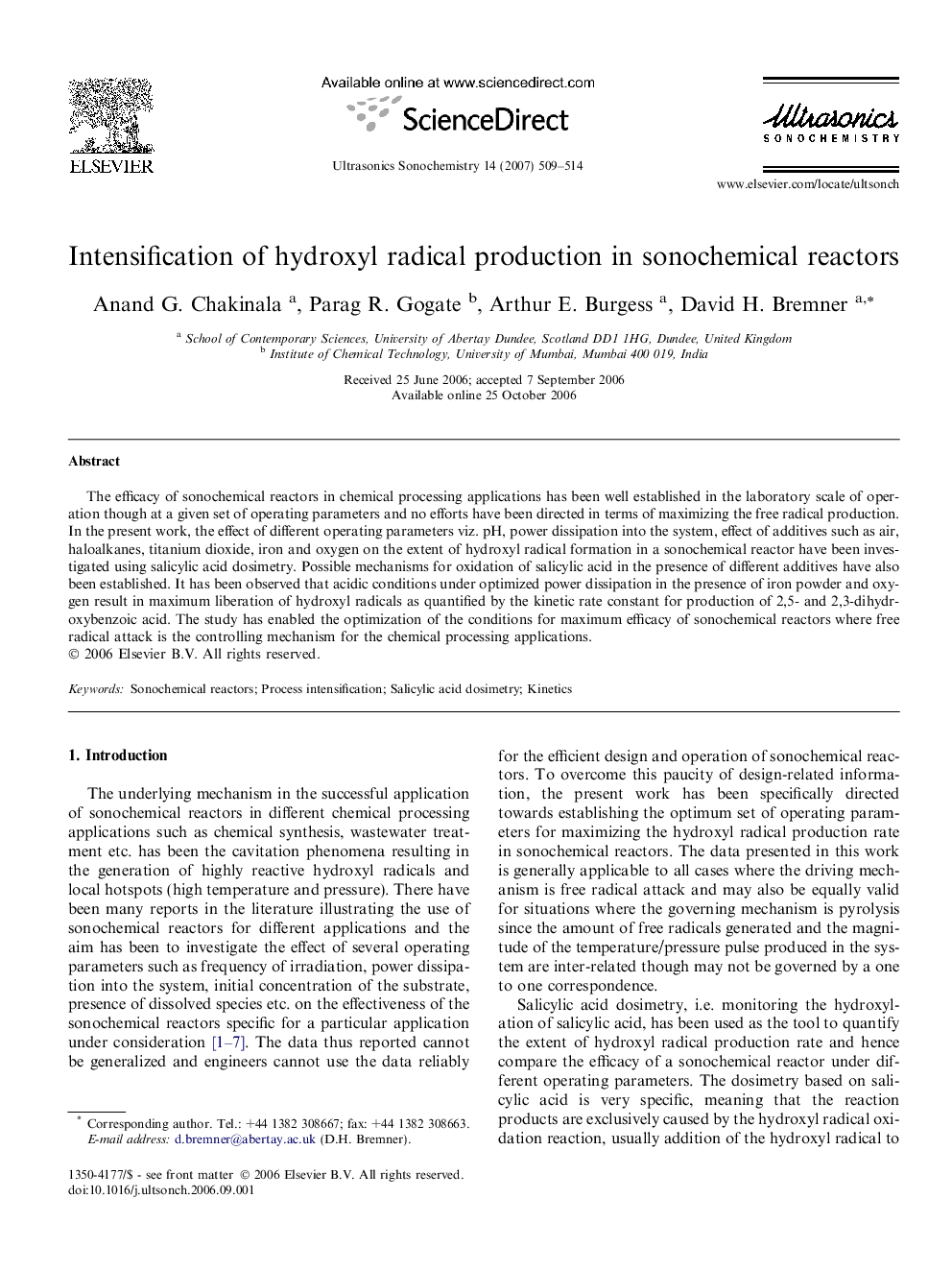| Article ID | Journal | Published Year | Pages | File Type |
|---|---|---|---|---|
| 1271342 | Ultrasonics Sonochemistry | 2007 | 6 Pages |
The efficacy of sonochemical reactors in chemical processing applications has been well established in the laboratory scale of operation though at a given set of operating parameters and no efforts have been directed in terms of maximizing the free radical production. In the present work, the effect of different operating parameters viz. pH, power dissipation into the system, effect of additives such as air, haloalkanes, titanium dioxide, iron and oxygen on the extent of hydroxyl radical formation in a sonochemical reactor have been investigated using salicylic acid dosimetry. Possible mechanisms for oxidation of salicylic acid in the presence of different additives have also been established. It has been observed that acidic conditions under optimized power dissipation in the presence of iron powder and oxygen result in maximum liberation of hydroxyl radicals as quantified by the kinetic rate constant for production of 2,5- and 2,3-dihydroxybenzoic acid. The study has enabled the optimization of the conditions for maximum efficacy of sonochemical reactors where free radical attack is the controlling mechanism for the chemical processing applications.
